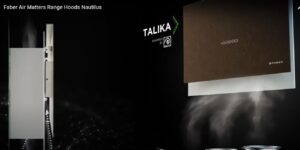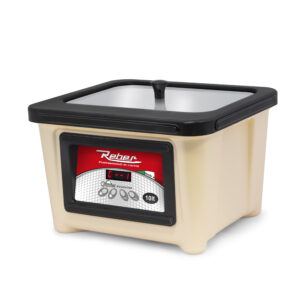The household appliances available on the market are now extremely efficient and equipped with advanced technologies able to optimize the use of electricity, water, detergent and gas, as well as ensuring a low noise level.
Kitchen appliances are increasingly “savers” and eco-sustainable, ensuring a more efficient use of resources, which translates into a reduction in consumption and a lower impact on the environment. The development of advanced technologies today allows household appliances to use less energy, water and gas, improving the sustainability of products and lightening the burden of bills without, however, lowering the level of performance. The introduction of the new energy label (which entered into force in March 2021 for dishwashers, refrigerators, freezers, wine cellars, washing machines and washer-dryers) shows how these appliances have now reached such a level of efficiency as to require the rescaling of the energy classes to make it easier to compare products, enhancing the effort made by companies in terms of innovation and reduction of consumption and waste. In the near future, the new labeling will also be extended to ovens and hoods.
Source AEG
Saving of electricity, water and detergent
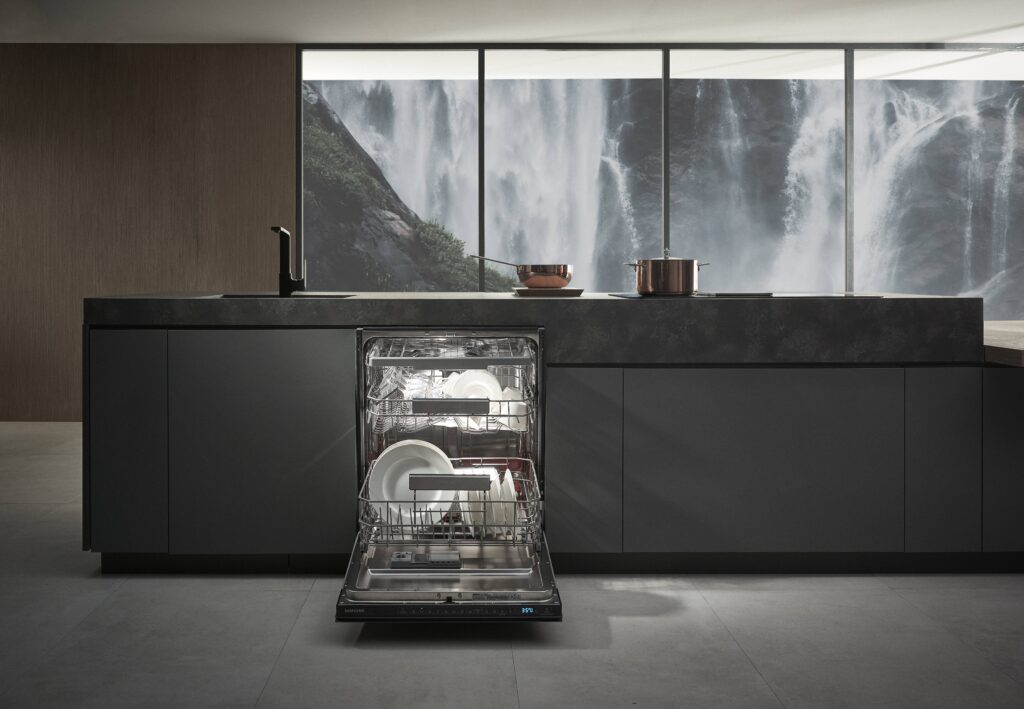
Today, washing dishes, glasses and kitchen utensils with a dishwasher is advisable compared to the hand wash, thanks to technologies that allow you to avoid waste and optimize resources. The latest generation dishwashers are equipped with programs which, thanks to the presence of sensors, automatically recognize the load, detecting the level of dirt, and consequently adjust the parameters and settings of the washing cycle to guarantee the best result without wasting electricity and water. Also with regard to the detergent dosage, the most advanced models have solutions to ensure that the machine itself automatically adjusts the quantity of detergent to use based on actual need. The appliances with self-dosing system in fact have a tank for the detergent that is taken directly from the machine, independently calibrating the most suitable quantity for the type of washing. Furthermore, the most recent dishwashers are equipped with the Eco program, which balances time, energy and water in order to obtain the best results with the lowest environmental impact, optimizing the use of resources as much as possible. In the energy label, the values indicated are based precisely on the use of this program: the energy consumption of the dishwasher is in fact indicated based on 100 operating cycles with the Eco program and also the water consumption is determined considering an operating cycle with this program. Moreover, a novelty of the new energy label is that the duration of the Eco cycle is also made explicit.
Source Beko
In addition to what has already been mentioned, there are other solutions in the name of efficiency and savings, such as the automatic switch-off of the dishwasher (preventing it from staying on more than necessary), the automatic opening of the door at the end of the washing for drying naturally without wasting energy and the cycle that allows you to clean even the most stubborn dirt without prewashing or pre-treating dishes by hand thanks to powerful jets of water directed in such a way as to obtain maximum washing intensity. Then there are models allowing connection to hot water produced for example by solar panels (so as to exploit the potential of renewable energy) and devices equipped with internal Led lights that guarantee full visibility with low consumption. Furthermore, a strategic component for dishwashers is the inverter motor, which ensures energy efficiency and silence. Finally, there are dishwashers that allow you to view the consumption of water and electricity directly from the control panel, thus having a simple and immediate way to monitor the used resources.
Source Bosch
In addition to the dishwasher, washing machine is also often placed in the kitchen. The energy efficiency of this appliance has come to exceed the A+++ class of the old energy label. Today models that reach the A class of the new labeling are already available, demonstrating the results obtained by manufacturers in looking for highly efficient solutions in terms of energy consumption. In addition, as for dishwashers, even the latest generation washing machines have systems able to self-dose detergent and water, and programs whose washing parameters are automatically adjusted according to the type of fabric and the degree of soiling of the laundry. Furthermore, with the new energy label, the Eco 40-60 program has become the reference for determining the consumption: as regards electricity in particular, the value expressed in kWh on the label is based on 100 washing cycles with this program, which is considered to be the most efficient in terms of energy and water use. With regard to the engine, even for washing machines the use of inverter motors ensures efficiency and silence (with models that reach the A class of noise). And there are products in which the movements of the basket have been studied to obtain a more uniform distribution of the water in the tank, in order to make washing faster and with better performance. Finally, as for the dishwasher, among washing machines devices are available that allow you to control the consumption of water and electricity.
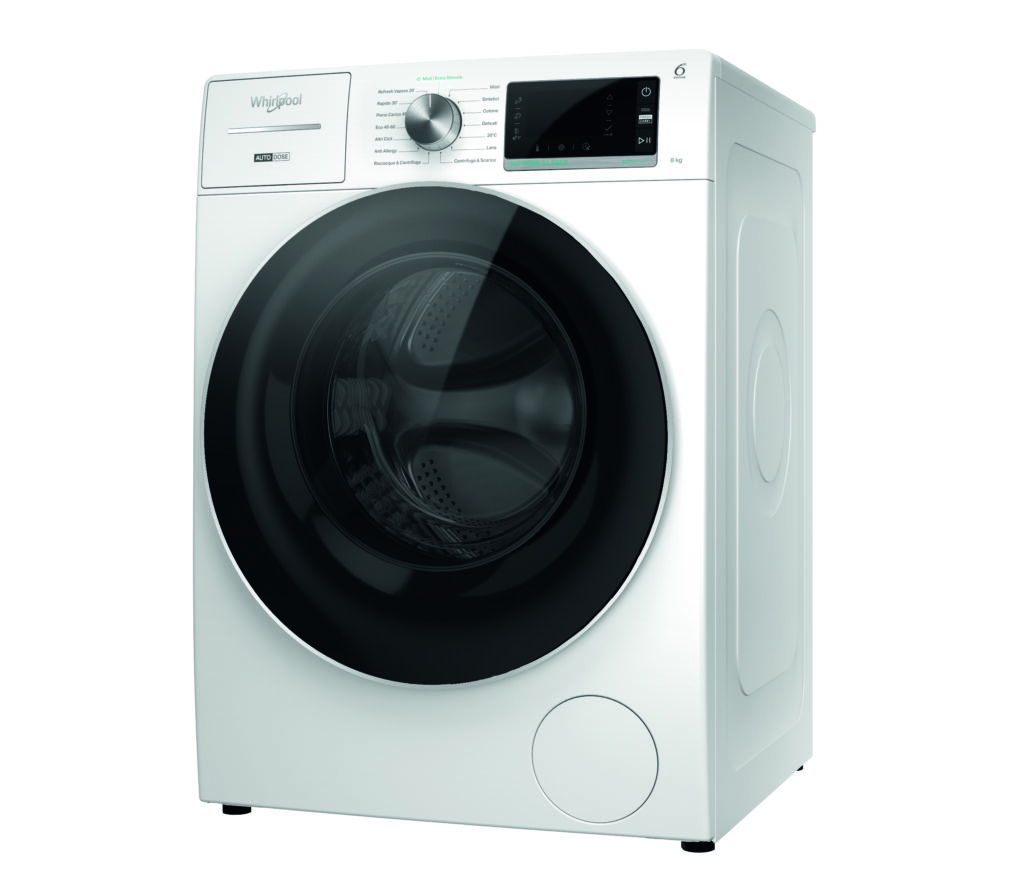
Refrigerators: efficient and without dispersion
Refrigerators equipped with the most advanced technologies provide the best solutions for storing food, while ensuring reduced consumption. These appliances are efficient and some models are already available reaching the A class according to the new energy label. Reduced energy consumption is important for this type of household appliances, which remain on 24 hours a day and therefore weigh on the bill. The new generation models are equipped with components, technologies and functions that keep the temperature stable and avoid the dispersion of cold (for example, increasingly performing insulation and digital inverter compressor, which automatically adjusts its speed based on the actual need for cooling).
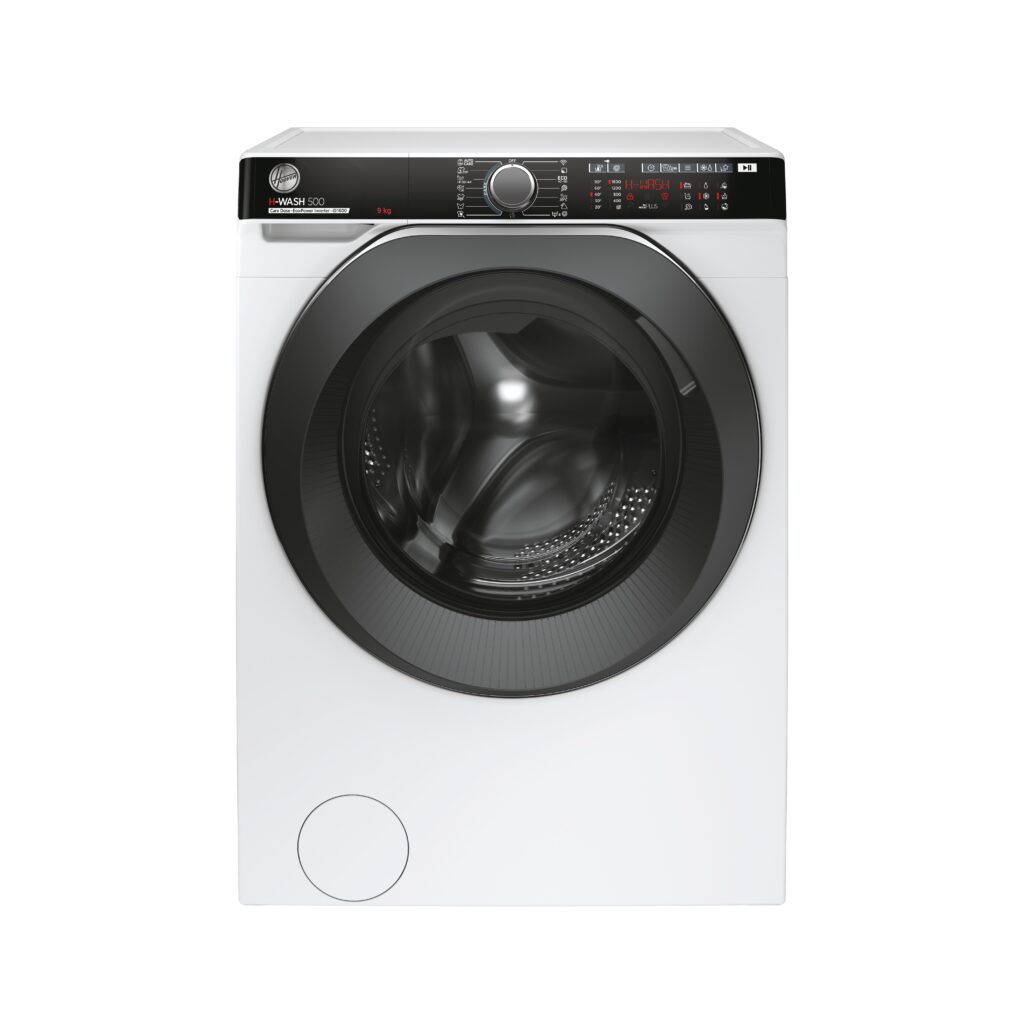
Furthermore, the No-frost technology prevents the formation of ice, which compromises the efficiency of the appliance, while the presence of the Eco function optimizes the operation of the appliance in the name of energy saving. To obtain the best performance without waste, the air circulation system is also fundamental, which keeps the internal temperature uniform and constant: in particular, some models of refrigerators are equipped with two independent cooling systems to ensure optimal conditions in each compartment. In addition, among the innovations for the efficiency of refrigerators there are, for example, products equipped with a ventilation system that also acts in the door area, keeping temperature fluctuations in this critical area under control. Another anti-dispersion solution are refrigerators with direct access drawers in the freezer area: instead of the classic freezer door there are sliding drawers, each of which can be opened directly from the outside. A further innovation are the appliances with the door equipped with a glass panel that lights up with two simple touches: it allows you to look inside the refrigerator without opening it in order to avoid dispersing cold.
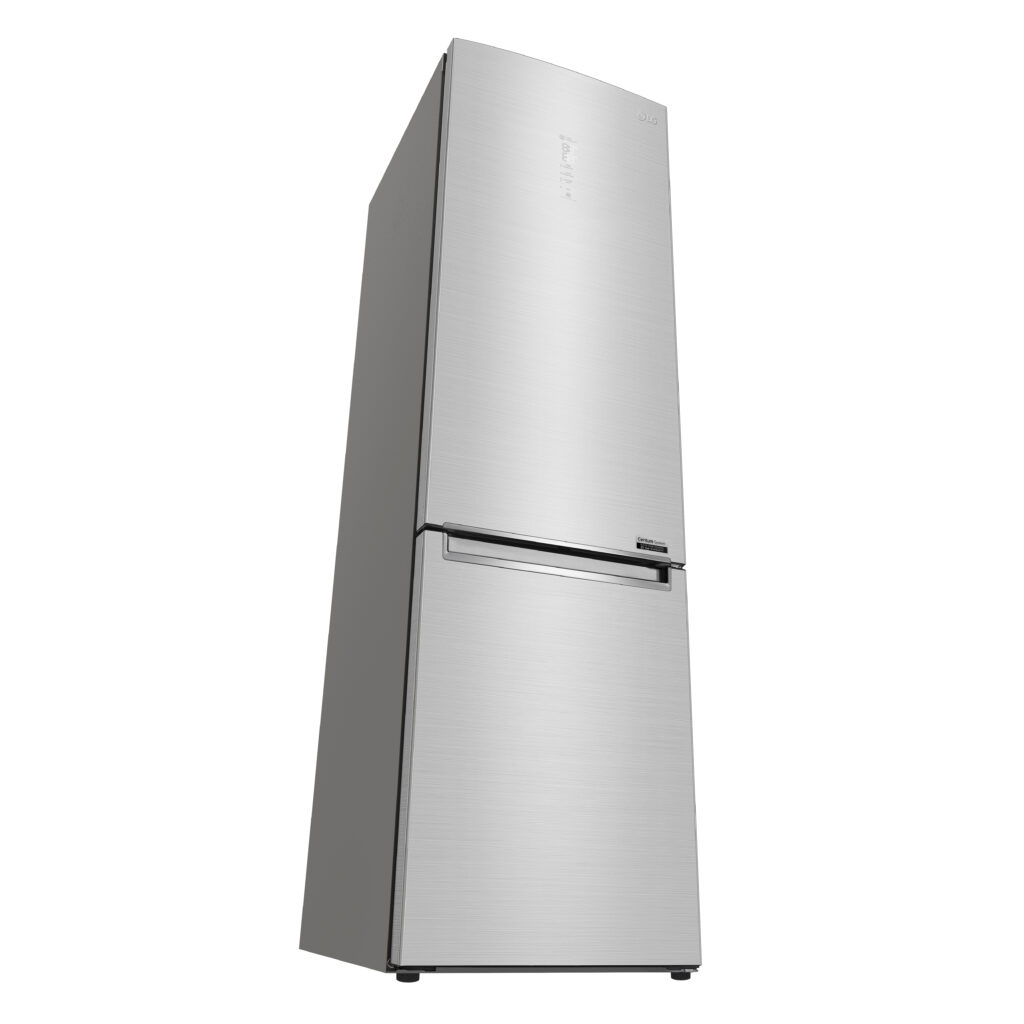
Other tools that favor an anti-waste functioning of the appliance are, for example, the alarms that indicate if the door has been left open or if the temperature is too high. Moreover, the precise setting of the cold in the fridge and freezer compartments are displayed through the electronic controls. And as far as lighting is concerned, the presence of LEDs allows good visibility with reduced use of electricity. Finally, the latest generation refrigerators are not only appliances capable of guaranteeing low energy consumption but also a low noise level: this aspect was particularly highlighted in the new energy label with the introduction of the noise emission class (from A to D), which is added to the noise emission level expressed in dB.
Air is greener and greener in the kitchen
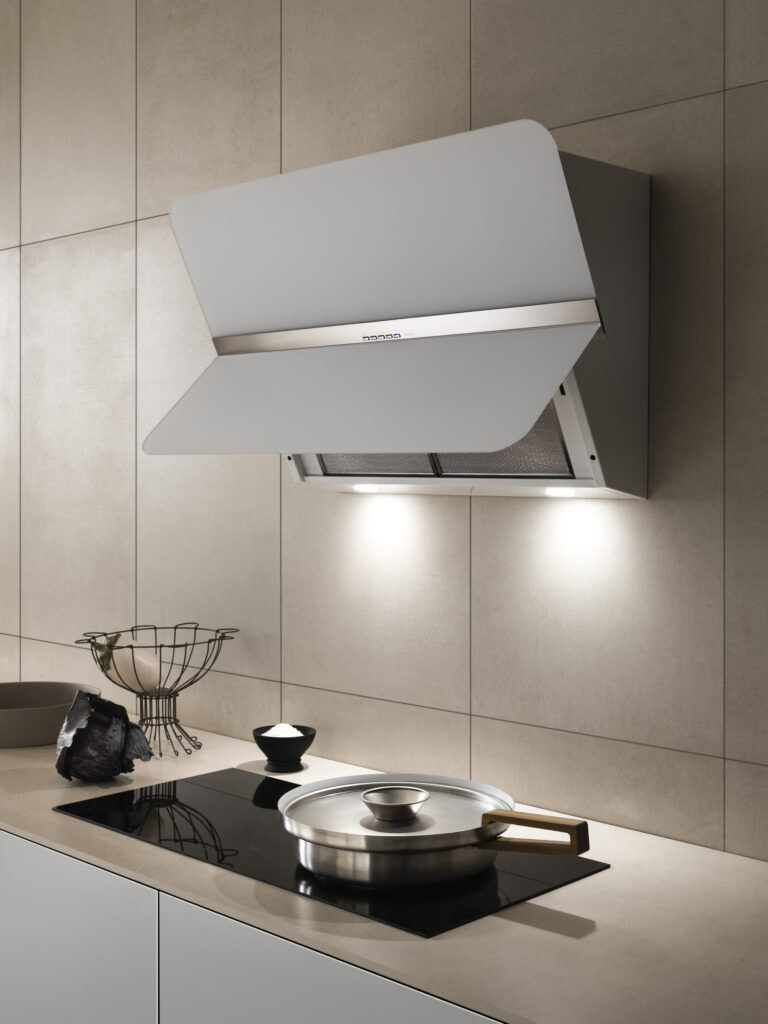
Breathing clean air free from cooking fumes and vapors does not necessarily mean having to consume a lot of electricity: in the field of kitchen appliances, in fact, hoods are among the appliances able to reach high standards of energy efficiency. The most modern versions guarantee high performance in terms of air suction with reduced electricity consumption. This is possible also thanks to highly efficient motors that ensure energy savings while maintaining a wide suction efficiency. There are hoods equipped with electronically controlled motors that maximize performance. Furthermore, the use of permanent magnets placed on the rotor allows to drastically reduce the absorption of energy by the extractor hood. Another important factor of the system, in terms of sustainability, is filtration. For example, washable and regenerable anti-odor filters are components that can last for years. The regeneration operation is simple: filters can be washed also in the dishwasher and then reactivated in the oven. Among the latest innovations there are long-life filters that combine activated carbon and zeolite, a mineral with a high capacity to absorb organic compounds and water vapor. Thanks to these characteristics, zeolite is able both to reduce bad smells and absorb cooking vapors. In terms of functions, for example, models are available that carry out a continuous air change for 24 hours and with minimum consumption and switch off automatically, in order to guarantee a healthy environment in the kitchen without impacting too much on the bill.
Another relevant element, when it comes to hoods, is lighting. In fact this appliance must guarantee the good visibility of the hob, but with attention to electricity consumption. For this reason, several models use LED lights, which combine the need to effectively illuminate the worktop with reduced electricity consumption. In addition, the LEDs are perfectly integrated into the structure of the hood. A final aspect to consider is that the most recent hoods combine low consumption with silence, one of the parameters highlighted by the energy label. The study of air flows, the use of innovative materials and silent motors have allowed brands to develop products capable of reducing noise to a minimum, while maintaining high suction performance.
Even cooking world looks to savings and efficiency
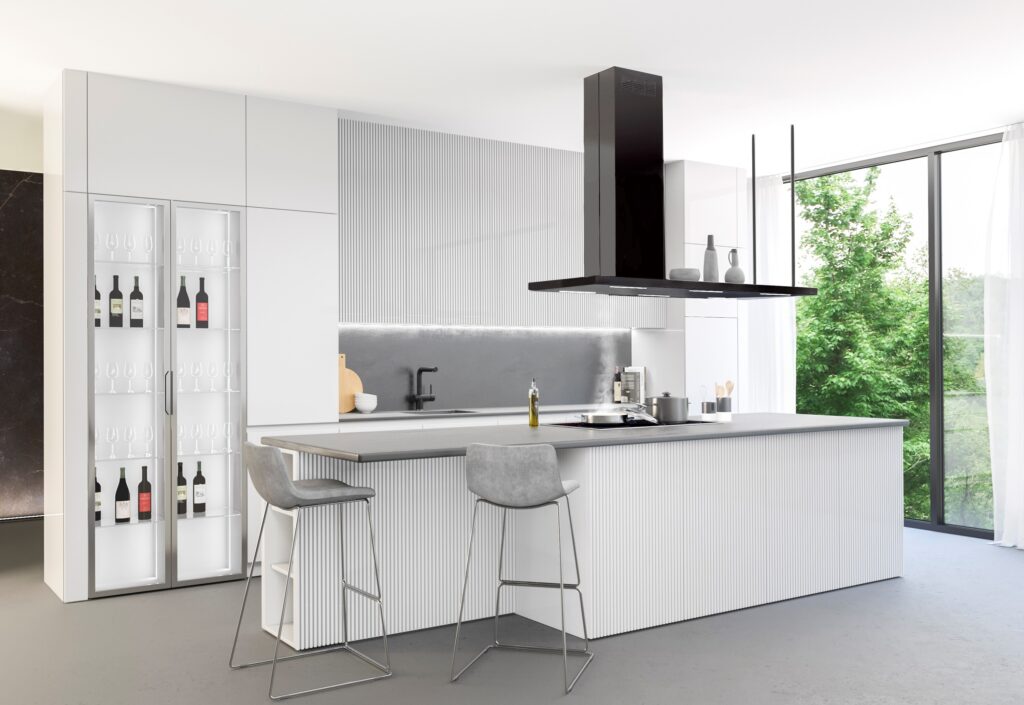
In the kitchen, part of the energy consumption depends on the cooking appliances. In this segment too, manufacturers have worked to find solutions capable of avoiding waste and balancing the use of resources and performance. As for the hobs, in induction models the possibility of adjusting the appliance to numerous power levels (and also of using automatic programs) makes it easy for the user to precisely modulate the heat intensity in the various cooking zones so as not to use more electricity than the necessary. In addition, the presence of the power limiter allows you to adjust the power consumption. Another element to consider is that with induction the dispersion of energy is reduced to a minimum because the heat is generated directly on the bottom of the pan and only when this is in direct contact with the plate. In order to obtain an optimal functioning and no waste, in some models hob and hood can be connected so that the suction power is automatically adjusted on the basis of the selected cooking level. The user can also choose a suction hob, with very efficient solutions that combine hoods in A+++ class to the induction.
No less advanced are proposals relating to gas hobs, because also in this case, technological innovation has generated high-performance and efficient products. The most advanced models integrate systems to regulate the intensity of the flame on predefined levels, similar to what happens in induction hobs: in this way heat is controlled with great precision, avoiding the waste of gas. Furthermore, burner is the protagonist of efficiency in this type of product. There are models that exceed the energy efficiency standards required at European level, guaranteeing a reduction in cooking times and gas consumption. Other cost-effective and anti-waste solutions are burners with Dual control, which allow the two rings to work independently, so to make possible to use even only the smallest ring if great power is not required. Finally, gas hobs are available equipped with timers which, for each burner, allow you to set the desired cooking time after which the flame goes out automatically, avoiding the use of the appliance for longer than the needed time.

As for the ovens, the numerous innovations that distinguish the more advanced models contribute not to waste electricity and help to reduce heat loss. In terms of energy efficiency, there are products that exceed the A class and have functions to manage the cooking process with great precision, helping to optimize the use of the oven. Thanks to the automatic programs, in fact, the oven independently adjusts the parameters without having to manually set the type of heating, the duration or the temperature: in this way the used energy is only the needed one. Some products then allow the exploitation of residual heat: in practice, the appliance switches off before the end of the process and finishes cooking using the heat that remains in the cavity. Furthermore, very important for the efficiency of the oven is the air circulation: the ventilated models are particularly efficient because they allow a uniform distribution of heat. In addition, a relevant factor to avoid dispersion is the good visibility of the cavity so as not to have to open the appliance several times to check the food: for this purpose, the use of LED lights allows to adequately illuminate the various shelves with a low consumption of electricity, moreover the models with integrated camera allow you to control the food in the oven even remotely directly from your mobile phone. Finally, an innovation that makes ovens more efficient is represented by the possibility of dividing the cavity of the appliance into two parts and using only the upper part: energy consumption is reduced, as well as preparation time. A final mention is dedicated to freestanding cookers, because these products also present solutions in the name of efficiency and energy saving. In particular, there are models that exceed the A class and that are equipped with high efficiency burners.
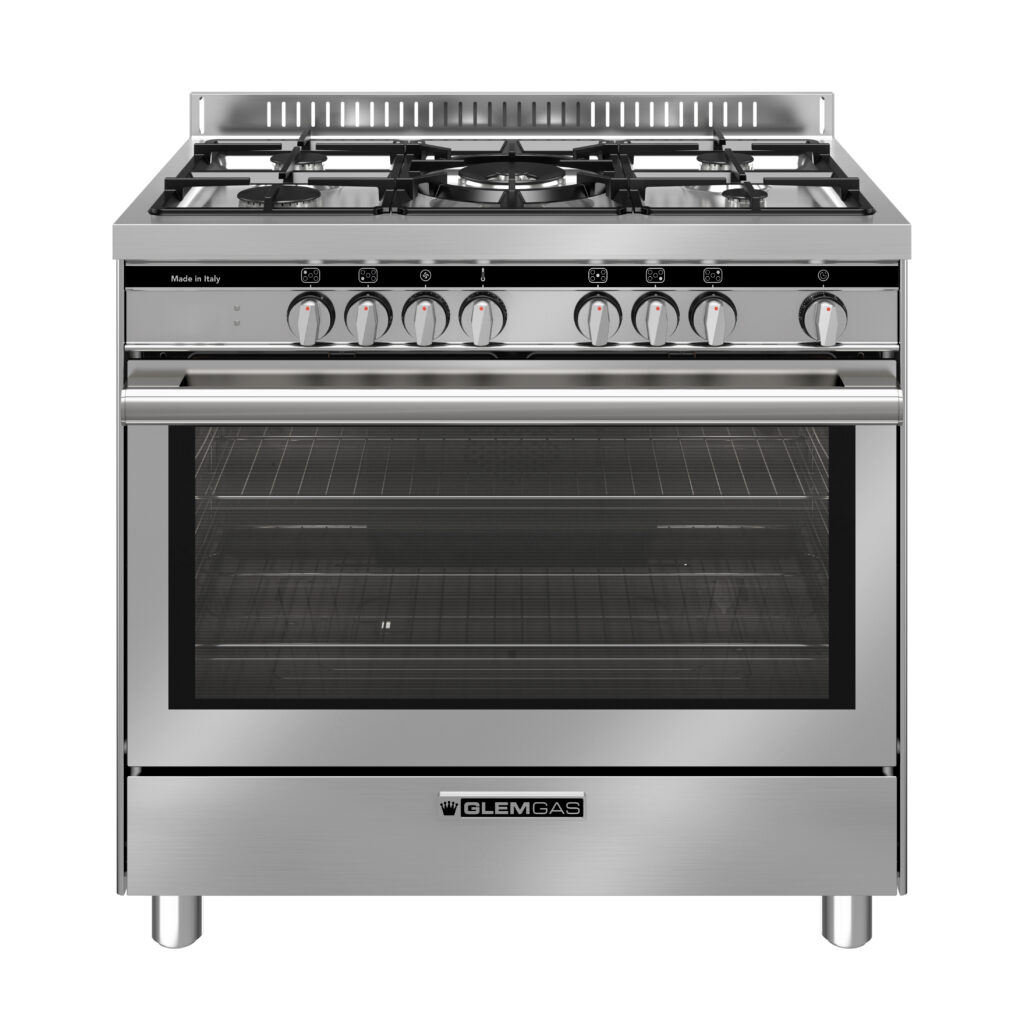
| Check consumption with the app Today, many kitchen appliances are connected, offering various benefits to the user. Among these, there is also the possibility of connecting to the appropriate app to be updated on consumption, obtain information on the most used programs and take advantage of suggestions. |


